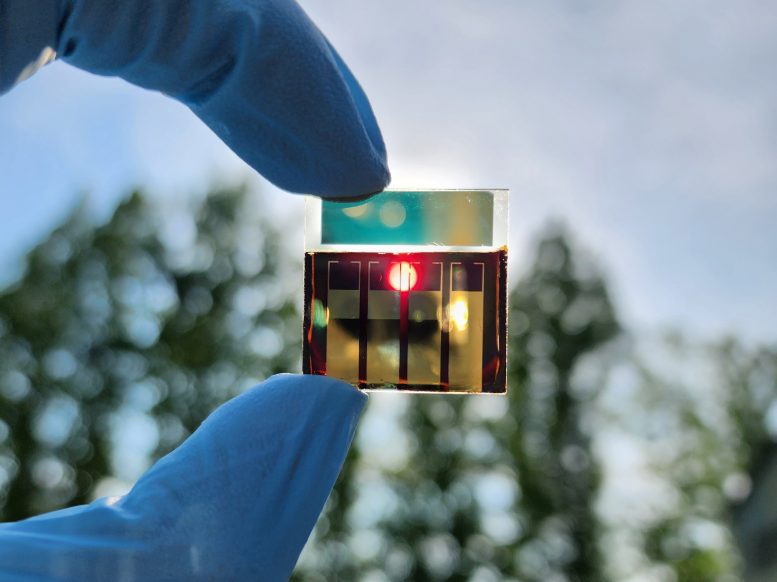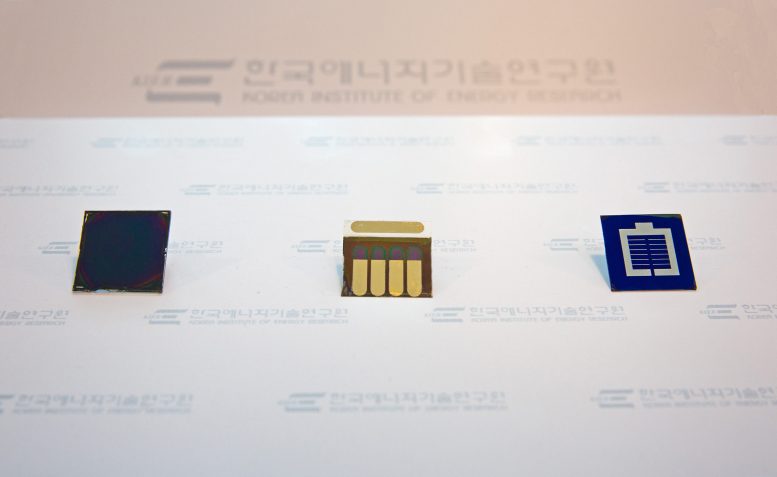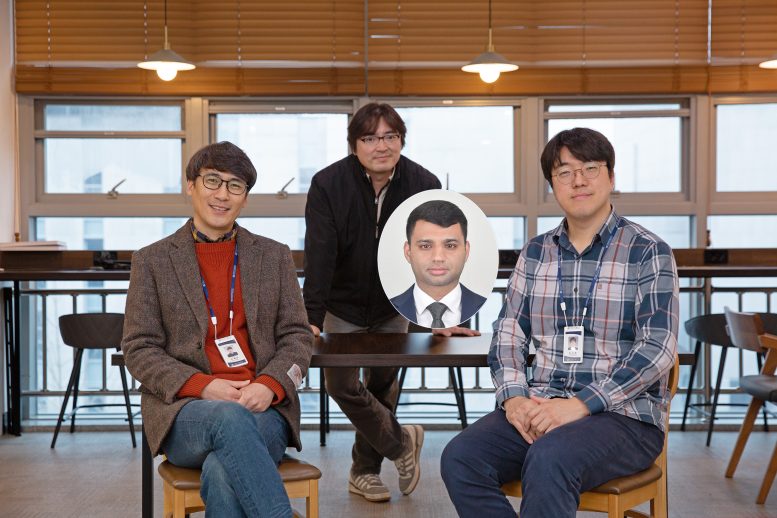
The Korea Institute of Energy Research has significantly advanced semi-transparent perovskite solar cell technology, achieving a world-leading efficiency of 21.68% and demonstrating exceptional durability. This breakthrough, aimed at enhancing solar cell application in windows and tandem configurations, addresses key challenges in achieving carbon neutrality by 2050. Through innovative research, the team has improved the stability and efficiency of these cells, making a substantial contribution to the field of solar energy. Credit: Korea Institute of Energy Research
The problem of metal oxide layer degradation in semi-transparent perovskite solar cells has been successfully tackled and resolved, demonstrating significant progress for the first time in the world.
The Korea Institute of Energy Research’s Photovoltaics Research Department, in collaboration with the KIER Energy AI and Computational Science Lab, has made progress in enhancing the durability and performance of semi-transparent perovskite solar cells. These cells show promise for applications in building windows and in the development of tandem solar cells.
The semi-transparent solar cells achieved a record-breaking efficiency of 21.68%, making them the most efficient among the perovskite solar cells using transparent electrodes in the world. Additionally, they showed remarkable durability, with over 99% of their initial efficiency maintained after 240 hours of operation.
The Quest for Carbon Neutrality and Solar Innovation
In order to reach carbon neutrality by 2050, the key lies in attaining ‘ultra-high efficiency’ and ‘diversifying the application areas’ of next-generation solar cell technology, overcoming constraints in installation spaces and national land area. This requires efficient and multi-functional technologies like tandem solar cells and solar cells for windows. Highly efficient and stable semi-transparent perovskite solar cells are required in both technologies.
For the fabrication of the semi-transparent perovskite solar cells, it is necessary to replace the metal electrodes of conventional opaque solar cells with transparent electrodes that allow light to pass through. During this process, high-energy particles are generated, leading to the degradation of the performance of the hole transport layer.

Perovskite solar cell, semi-transparent perovskite solar cell, perovskite-si tandem solar cell from the left. Credit: Korea Institute of Energy Research
To prevent this, it is common to deposit a metal oxide layer that acts as a buffer between the hole transport layer and the transparent electrode layer. However, compared to opaque solar cells produced under the same conditions, the charge-transporting properties and stability of the semi-transparent devices are reduced, and the exact causes and solutions have not been clarified.
Breakthrough in Understanding and Improving Solar Cell Stability
The researchers utilized electro-optical analysis and atomic-level computational science to identify the causes of the reduced charge transporting properties and stability that occur during the fabrication of semi-transparent perovskite solar cells. Through this, they discovered that lithium ions (Li), added to increase the electrical conductivity of the hole transport layer, diffuse into the metal oxide layer that serves as a buffer, ultimately changing the electronic structure of the metal oxide buffer layer into that degrades its characteristics.
Furthermore, beyond identifying the cause, the researchers solved the problem by optimizing the oxidation time of the hole transport layer. They found that converting lithium ions into stable lithium oxide (LixOy) through optimized oxidation mitigates the diffusion of lithium ions, thereby enhancing the stability of the device. This discovery reveals that lithium oxide, previously considered a simple reaction byproduct, can play a crucial role in improving efficiency and stability.

Ahn SeJin, Ahn Seung-kyu, Yim Kanghoon from the left, and Naqvi Syed Dildar Haider in the circle. Credit: Korea Institute of Energy Research
The developed process resulted in semi-transparent perovskite solar cells with an impressive 21.68% efficiency, the highest among all transparent electrode perovskite solar cells. In addition, this research demonstrated an impressive retention of over 99% of its initial efficiency for 400 hours in dark storage and for more than 240 hours in continuously illuminating operational conditions, showcasing its outstanding efficiency and stability.
Implementation in Bifacial Tandem Solar Cells
The research team went further and applied the developed solar cells as the top cell of tandem solar cells, creating the country’s first bifacial tandem solar cells that utilize light reflected from the rear as well as that incident from the front surface. In collaboration with Jusung Engineering Co., Ltd. and the German Jülich Research Center, the bifacial tandem solar cells achieved high bifacial equivalent efficiencies of 31.5% for four-terminal and 26.4% for two-terminal configurations under conditions where the reflected light from the rear was 20% of standard sunlight.
Dr. Ahn SeJin of the Photovoltaics Research Department, the leader of the research, stated, “This study represents a significant advance in the field by examining the degradation process occurring at the interface of an organic compound and metal oxide buffer layer which is unique to semi-transparent perovskite solar cells,” and added, “Our solution is readily implementable, demonstrating great potential for the future use of the technologies we have developed.”
Reference: “Mitigating Intrinsic Interfacial Degradation in Semi-Transparent Perovskite Solar Cells for High Efficiency and Long-Term Stability” by Syed Dildar Haider Naqvi, Kyungnan Son, Wonzee Jung, Hui ung Hwang, Sangmin Lee, Arheum Lee, Minjong Keum, Sunwook Kim, Jeong Won Kim, Min Gu Kang, Hee-eun Song, Sungjun Hong, Inyoung Jeong, Seungkyu Ahn, Andreas Lambertz, Kaining Ding, Weiyuan Duan, Kanghoon Yim and SeJin Ahn, 30 October 2023, Advanced Energy Materials.
DOI: 10.1002/aenm.202302147